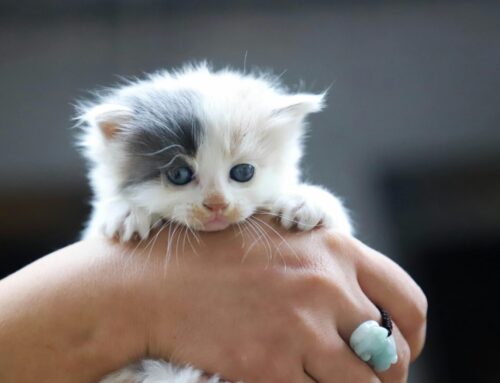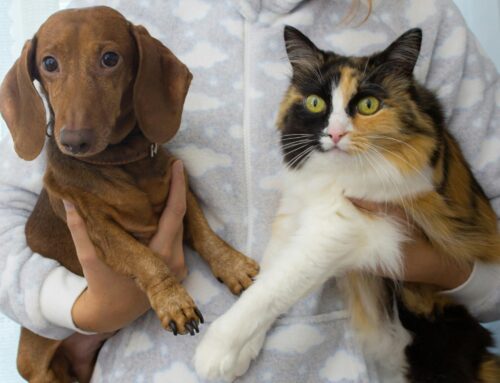If you’ve ever watched your buddy sniff their cat food, paw at it, and then walk away without taking a bite, you know how frustrating feeding time can be. Unlike dogs, who often inhale their meals without hesitation, cats can be notoriously picky about what they eat. One day, they seem to love their food; the next, they act as if you’ve offered them something completely unacceptable.
But why are cats so finicky? Is it just their nature, or are there underlying reasons behind their selective eating habits? And with so many food options available—dry, wet, raw, freeze-dried—what should you actually be feeding them?
This guide will explore the science behind feline food preferences, why cats refuse food, how to choose the best diet, and strategies to keep even the pickiest eaters happy and healthy.
Why Are Cats Such Picky Eaters?
While a dog may gobble up leftovers, a cat often approaches new food with skepticism. This behavior isn’t just a personality quirk—it’s rooted in feline biology, evolution, and sensory perception.
1. Evolutionary Background: The Hunter’s Diet
Cats are obligate carnivores, meaning their bodies are designed to derive nutrition from animal-based proteins. In the wild, a cat’s diet consists of small prey like mice, birds, and insects, eaten fresh. This evolutionary background makes them naturally wary of foods that don’t match their instinctual diet. Unlike omnivorous animals that adapt to a variety of foods, cats have specific dietary needs that influence their preferences.
2. Sensory Sensitivities: Why Smell and Texture Matter
Cats experience food differently than humans:
Smell First, Taste Second: A cat’s sense of smell is 14 times stronger than ours. They rely heavily on scent to determine if food is safe to eat. If something smells “off”—even slightly—they may refuse it.
Texture Preferences: Some cats prefer soft pâté, while others like shredded or chunky food. Texture plays a huge role in whether a cat will accept or reject a meal.
Lack of Sweet Taste Receptors: Cats cannot taste sweetness, making them uninterested in sugary foods. However, they are very sensitive to bitter or sour flavors, which may explain their aversion to certain ingredients.
3. Temperature Preferences: The “Fresh Prey” Instinct
Cats prefer food served at body temperature (around 100°F)—the temperature of freshly caught prey. If a meal is too cold (like straight from the fridge), they may reject it. Warming their food slightly can make it more appealing.
4. Early Food Exposure Shapes Preferences
A cat’s diet as a kitten influences what they’ll eat as an adult. If a kitten is raised on only dry food, they may resist wet food later in life. Similarly, a cat that grew up eating only fish-flavored food may reject poultry-based meals. This is why introducing a variety of foods early on is important for preventing pickiness.
5. Health Issues Can Cause Picky Eating
A cat that suddenly becomes finicky when they previously ate well may have an underlying health issue. Some common medical causes include:
Dental Pain: Tooth decay, gum disease, or oral ulcers can make eating painful.
Gastrointestinal Problems: Nausea, acid reflux, or inflammatory bowel disease (IBD) can cause food aversion.
Kidney Disease: Cats with kidney issues often develop decreased appetite or aversion to certain protein sources.
Food Allergies or Sensitivities: Some cats develop allergies to ingredients like chicken, fish, or grains, leading to discomfort after eating.
If your cat’s eating habits change drastically, consult a veterinarian to rule out medical issues.
Understanding the Different Types of Cat Food
With so many options available, it can be overwhelming to decide what’s best for your cat. Here’s a breakdown of the most common types of cat food and their pros and cons.
1. Dry Cat Food (Kibble)
Pros:
Convenient, easy to store, and has a long shelf life.
Less expensive than wet food.
Helps reduce plaque buildup (though it’s not a substitute for dental care).
Cons:
Low moisture content (can contribute to dehydration and urinary issues).
Often contains more carbohydrates than a cat needs.
Some cats find it less palatable than wet food.
Best for: Cats who drink plenty of water, have no urinary issues, and enjoy crunchy food.
2. Wet Cat Food (Canned or Pouch Food)
Pros:
High moisture content (helps with hydration and urinary health).
Usually higher in protein and lower in carbs than kibble.
More palatable for most cats.
Cons:
More expensive than dry food.
Spoils quickly once opened.
Can contribute to plaque buildup if dental care isn’t maintained.
Best for: Cats prone to dehydration, urinary issues, or those who prefer softer food.
3. Freeze-Dried and Dehydrated Cat Food
Pros:
Retains more nutrients than kibble due to minimal processing.
Can be served dry or rehydrated with water.
High in protein and low in carbs.
Cons:
Can be expensive.
Some cats dislike the rehydrated texture.
Requires additional hydration to prevent dehydration.
Best for: Cats who prefer a raw diet but need a more convenient option.
4. Raw Cat Food (Commercial or Homemade)
Pros:
Closest to a cat’s natural diet.
High in protein and moisture.
No artificial additives or fillers.
Cons:
Risk of bacterial contamination if not handled properly.
Requires careful balancing to ensure proper nutrition.
Some vets advise against it due to safety concerns.
Best for: Cats who thrive on a species-appropriate diet and whose owners are committed to safe food handling.
5. Veterinary Prescription Diets
Pros:
Specially formulated for medical conditions.
Scientifically tested for therapeutic benefits.
Cons:
Expensive.
Only available with veterinary approval.
Some cats dislike the taste.
Best for: Cats with health conditions requiring special dietary management.
Tips for Encouraging a Picky Eater to Eat
If your cat is turning their nose up at food, try these strategies:
1. Warm Up Their Food
Cats prefer warm food. Try heating wet food slightly to enhance aroma and make it more appealing.
2. Add a Tasty Topper
Try adding a little tuna juice, bone broth, or freeze-dried meat crumbles to make food more enticing.
3. Rotate Proteins and Textures
Switching between different protein sources (chicken, fish, beef) and textures (pâté, chunks, shreds) helps prevent pickiness.
4. Stick to a Feeding Schedule
Free-feeding (leaving food out all day) can lead to picky eating. Instead, feed at set meal times.
5. Reduce Stress Around Mealtime
Cats are sensitive to their environment. Feed them in a quiet place, away from loud noises or other pets.
Final Thoughts: Understanding Your Cat’s Unique Eating Habits
Cats are naturally selective eaters due to their evolutionary instincts, sensory preferences, and past experiences. While this can be frustrating for owners, understanding their dietary needs and food choices can make mealtime smoother.
By experimenting with different flavors, textures, and temperatures, you can find a diet that meets your cat’s nutritional needs while satisfying their unique preferences. If your cat remains extremely finicky or loses weight, consult a veterinarian to rule out any underlying issues.
With patience and the right approach, you can keep even the pickiest feline happy and well-fed!




